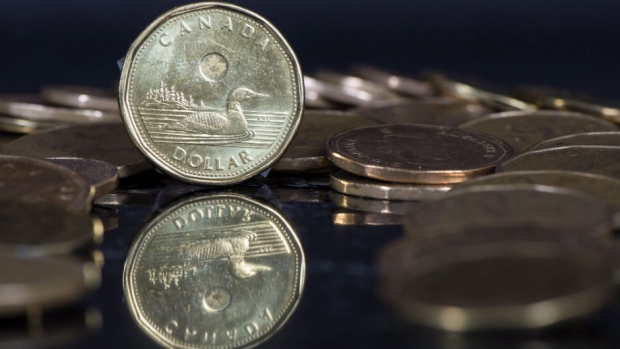Aug 27, 2019
Short the loonie before Bank of Canada policy shifts: Goldman
, Bloomberg News

Investors should bet on declines in the loonie against the U.S. dollar and the yen as the Bank of Canada may soon join other central banks in a dovish shift.
That’s the view of Goldman Sachs & Co. strategists Zach Pandl and Karen Fishman. They said in a note Tuesday that while Canada’s economy has held up well, it’s exposed to slower U.S. growth and the trade conflict that’s been heating up between America and China.
The BOC’s next decision comes Sept. 4. It will need to incorporate the latest tit-for-tat tariff announcement in its growth outlook, and is likely to lay the groundwork for an interest-rate cut the following month, the Goldman analysts said. That spells trouble for this year’s strongest Group-of-10 currency after the yen, they say.
“Unlike most of its G-10 peers, the BOC has not signaled a readiness to ease policy -- but we think that shift will be coming soon,” the strategists wrote. “As an open economy with a substantial commodity sector, any further weakness in global growth should eventually weigh on Canadian output.”
The loonie has gained 2.7 per cent this year, to about $1.3285 per greenback. It trails only the yen’s 3.8 per cent advance among G-10 currencies as haven assets have been in demand during the trade war. A Bloomberg gauge of the U.S. currency is up 1.2 per cent this year and is near its 2019 high.
Meanwhile, some other banks see scope for loonie strength. For example, a Citigroup technical analysis shows Canada’s currency is at a key level and should advance versus the dollar.
At their last meeting, in July, BOC officials left rates unchanged for a sixth straight decision and showed little willingness to consider easing any time soon.
But amid the escalating trade war, markets are pricing in a 68% probability that Canada’s central bank will cut rates in October. And more economists have come around to that view.
Goldman’s strategists cite risks to their call, including the potential for a more dovish Federal Reserve and the possibility that the BOC may be unwilling to ease without obvious signs of weakness in Canadian growth or inflation.
But any BOC rate-cut signal would lead speculators to trim long positions, while also potentially pushing rate spreads against Canada’s currency, they said.
“We set our trade target at 1.360 and stop at 1.305,” the strategists wrote. “Short CAD may also be paired with long JPY” in part for more direct exposure to weaker global growth.






